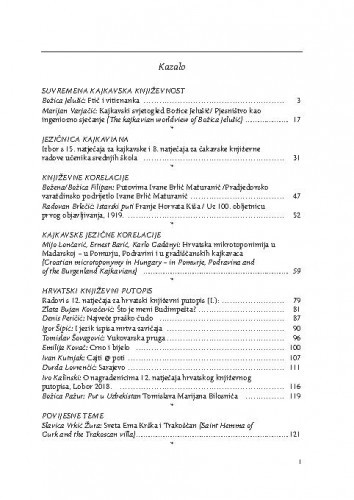Car Heinrich II. darovao je u Bambergu dana 16. travnja 1015. godine savinjskom grofu Wilhelmu, starijem sinu svoje nećakinje, koruške kneginje Eme od Friesacha i Zeltschacha, vilu Trakošćan i 30 kraljevskih seoskih gazdinstava te sve što on, car, posjeduje na području Wilhelmove markgrofovije između rijeka Save, Savinje, Sutle i Mirne. Wilhelmova majka Ema rođena je 983. godine na dvorcu Peilenstein (slov. Pilštanj) od oca Elgelberta von Peilensteina i majke Tute. Odrasla je na dvorcu cara (sv.) Heinricha II. i njegove žene (sv.) Kunigunde. Udala se za Wilhelma II. od Friesacha, Zeltschacha i Truxena. Nakon pogibije obojice sinova (1030.) i smrti supruga (1036.) osnovala je veliki broj crkava, podigla ženski benediktinski samostan u Gurku (Krško) te omogućila osnivanje krške biskupije. Veliki dio svojih posjeda poklonila je salzburškom biskupu Baldwinu u svrhu osnivanja benediktinskog samostana u Admontu. Pokopana je u novoj kripti krške katedrale 1174., beatificirana 1287., a kanonizirana 1938. god., iako je proces proglašenja sveticom počeo već sredinom 15. stoljeća. Među dvorcima koje je poklonila krškoj biskupiji nije naveden Trakošćan. Umrla je na Dan sv. Petra i Pavla 29.lipnja, ali joj se blagdan slavi dva dana ranije, 27.lipnja. Zaštitnica je trudnica, slijepih i nepokretnih osoba. Atributi su joj ruža i katedrala, a ponegdje i povelja koju drži u rukama. Svojom sveticom smatraju je Slovenci, Austrijanci i Nijemci. Nakon smrti njezinog supruga Wilhelma II. savinjski markgrof postaje Emin rođak grof Askuin Plain. Njega nasljeđuje sin Starhand I., a Starhanda I. sin Starhand II. koji je imao braću Ulrika, Weriganda i Bernarda. Starhand II. u ratnom pohodu gubi svoju markgrofoviju, a dobiva je Pilgrim Hohenwart. Njegov sin Ginter kratko vrijeme vlada savinjskom markgrofovijom, da bi je ponovo preuzeo Pilgrim. Nakon Pilgrimove smrti car Konrad III. tu markgrofoviju 1149. predaje Otokaru I. Štajerskom.; Emperor Henry II [Heinrich II] gave away Villa Trakoscan and 30 royal estates to Count William [Wilhelm] of Savinja, older son of his niece, the Carinthian Princess Emma of Friesach and Zeltschach, on April 16th, 1015, in Bamberg. The Emperor also gave the Count all that he possessed in William's Margraviate, situated between the rivers Sava, Savinja, Sutla, and Mirna. William's mother Hemma was born in 983 at Peilenstein castle, as the daughter of Engelbert von Peilenstein, and wife Tuta. She was raised in the palace of Emperor Henry II and his wife (Saint) Cunigunde, and was married to William II of Friesach, Zeltschach and Truxen. After both of her sons were murdered (in 1030), and then her husband (in 1036), Hemma founded a large number of churches, the women's Benedictine monastery at Gurk and enabled the founding of the Gurk Diocese. She gave away a large number of her estate properties to the Salzburg Bishop Baldwin for founding the Benedictine monastery at Admont. Hemma’s remains were buried in the new crypt of the Gurk Cathedral in 1174. She was beatified in 1287, and canonised in 1938, although the process of being declared a saint began as far back as the middle of the 15th century. Castle Trakoscan is not mentioned among the castles she gave away to the Gurk Diocese. She died on St Peter's and Paul's day, but her feast day is celebrated two days earlier, on June 27th. Saint Hemma is the patron of pregnant women, the blind, and the immobile. Her attributes are the rose and the cathedral, and sometimes a charter she holds in her hands. Slovenes, Austrians, and Germans venerate her as their saint. After the death of her husband William II, Hemma’s relative, Count Askuin Plain becomes the Savinja Margrave. He is succeeded by his son Starhand I, who is succeeded by Starhand II, whose brothers were Ulrich, Werigand, and Bernard. Starhand II loses his Margraviate to Pilgrim of Hohenwart, following a military campaign.
Sažetak

 Kaj : časopis za književnost, umjetnost i kulturu : 52(244),5-6(2019) / glavna i odgovorna urednica Božica Pažur.
Kaj : časopis za književnost, umjetnost i kulturu : 52(244),5-6(2019) / glavna i odgovorna urednica Božica Pažur.